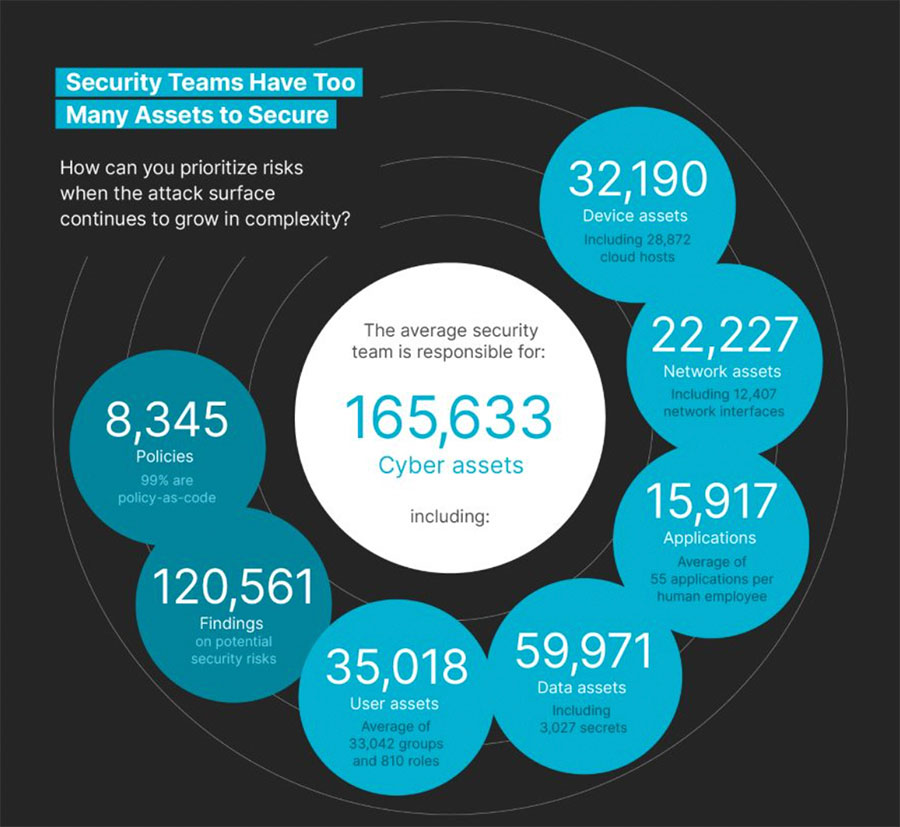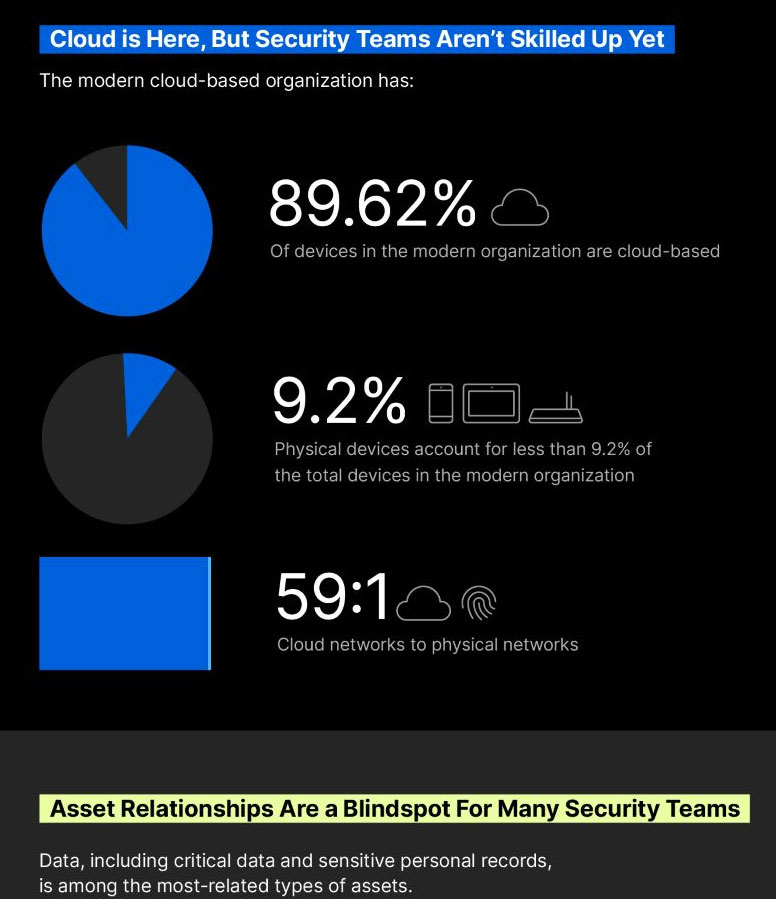Corporate assets being moved to cloud storage are straining IT security management to the breaking point as larger attack surfaces are created to increasingly expose organizations to cyber risk.
The enterprise technology ecosystem is being rapidly reshaped by API-first, cloud-first, and digital transformation initiatives. This, in turn, comes at a high cost to cybersecurity.
As more assets are deployed into enterprise production environments, companies face a heightened risk of cyberattack that starts by exploiting unknown, unmanaged, or poorly managed internet-facing assets.
The modern attack surface has grown too large and complex for security professionals to manage using traditional, manual approaches to the asset lifecycle.
Unprecedented Workload
Given too many assets to manage, security teams are fatigued and understaffed. They have an unprecedented number of assets to inventory, manage, and secure across a cloud-based organization.
Researchers found that, on average, modern security teams are responsible for more than 165,000 cyber assets, including cloud workloads, devices, network assets, applications, data assets, and users.
With cybersecurity talent in short supply, organizations need to help their existing teams become more efficient, according to the 2022 State of Cyber Assets Report (SCAR) released Tuesday by JupiterOne.

Source: JupiterOne
Shifts toward cloud-native development, microservices, and scale-out architecture have profoundly impacted security teams, according to Jasmine Henry, field security director at JupiterOne and lead author of the report.
Security teams are overworked, understaffed, underskilled, and navigate an average backlog of over 120,000 security findings.
“Enterprise asset inventories have changed significantly, and for the first time in history, assets are not necessarily deployed by humans. The landscape demands new, automated approaches to attack surface management,” Henry told TechNewsWorld.
Key Findings
Cyber assets significantly outnumber employees in the enterprise. The average organization has well over 500 cyber assets for every human employee. This makes automation a requirement for security success.
Proliferating devices include hosts, agents, and other device-related assets that are still an essential part of cybersecurity.
The ratio of devices to every employee at the average organization is 110:1. The average security team is responsible for 32,190 devices. Additionally, nearly 90 percent of modern device inventories are cloud-based.
Ultra-reliable dynamic network architectures demand new, automated approaches to security. Modern DevOps teams use network interfaces to route traffic between subnets by hosting load balancers, proxy servers, and network address translation (NAT) services.
Static IP addresses comprise fewer than 1 percent of network assets, while network interfaces make up 56 percent. The dynamic attack surface demands new, automated approaches to security.
Modern organizations are highly vulnerable to software supply chain attacks. The analysis of over 20 million application assets found that only nine percent of applications were homegrown or developed in-house. But 91 percent of code running in the enterprise was developed by third parties.
Last year’s major cybersecurity headlines included some terrifying software supply chain vulnerabilities from enterprise sources like Solar Winds and open-source software like Log4j, noted Henry.
“In fact, software supply chain security became nearly unmanageable for security teams in 2021, and the state of cyber assets in 2022 shows why,” she added.
By the Numbers
SCAR analyzed cyber asset inventories and user queries derived from the JupiterOne Cyber Asset Attack Surface Management (CAASM) platform for one week, from Sep. 28 to Oct. 5, 2021.
The total data set included more than 372 million security findings from 1,272 organizations, including enterprises, mid-market organizations, and small businesses.
Results show that cloud deployments are taking over as the de facto deployment model in companies of all shapes and sizes. The research found that 97 percent of security findings come from cloud assets.
Nearly 90 percent of device assets in the modern organization are cloud-based. Physical devices such as laptops, tablets, smartphones, routers, and IoT hardware represent less than 10 percent of total devices.
Cloud network assets outnumber physical networks by a ratio of nearly 60:1. Yet analysis of nearly 10 million security policies found that cloud-specific ones represent less than 30 percent of the total.
During the pandemic, businesses turned to cloud technologies to support the surge in remote work and maintain some semblance of normalcy in business operations.
Unfortunately, the rapid digital transformation also resulted in new entry points for cyberattacks by malicious threat actors, according to Sounil Yu, CISO and head of research at JupiterOne.
“This research shines a light on the sheer volume of cyber assets in today’s landscape and serves as a warning to business leaders and security professionals to take better stock of their assets so that they can understand the risk implications from their expanded attack surface,” he told TechNewsWorld.
Cloudy Forecast Needs Attention
Most security teams pay little attention to the indirect relationships between users, devices, networks, and critical data. Only eight percent of queries asked the JupiterOne platform to consider second-degree or third-degree relationships between assets, noted the report.
Critical data and sensitive information are among the most-related types of assets, with 105 million first-degree relationships (i.e., direct access from) to users, apps, devices, and workloads.
The analysis also uncovered nearly 45 million relationships between security findings, indicating that many security backlogs contain findings identified as critical vulnerabilities or policy exceptions.
This leads to the average security team being blind to some security risks. Many teams lack the resources — or are underskilled — to fully understand the risk of potential compromises.

Source: JupiterOne
Organizations need to invest in cloud-native security tools that allow for automation and data-driven decision-making, SCAR recommends. This will help security teams gain true visibility of their cyber asset landscape and asset relationships.


























































